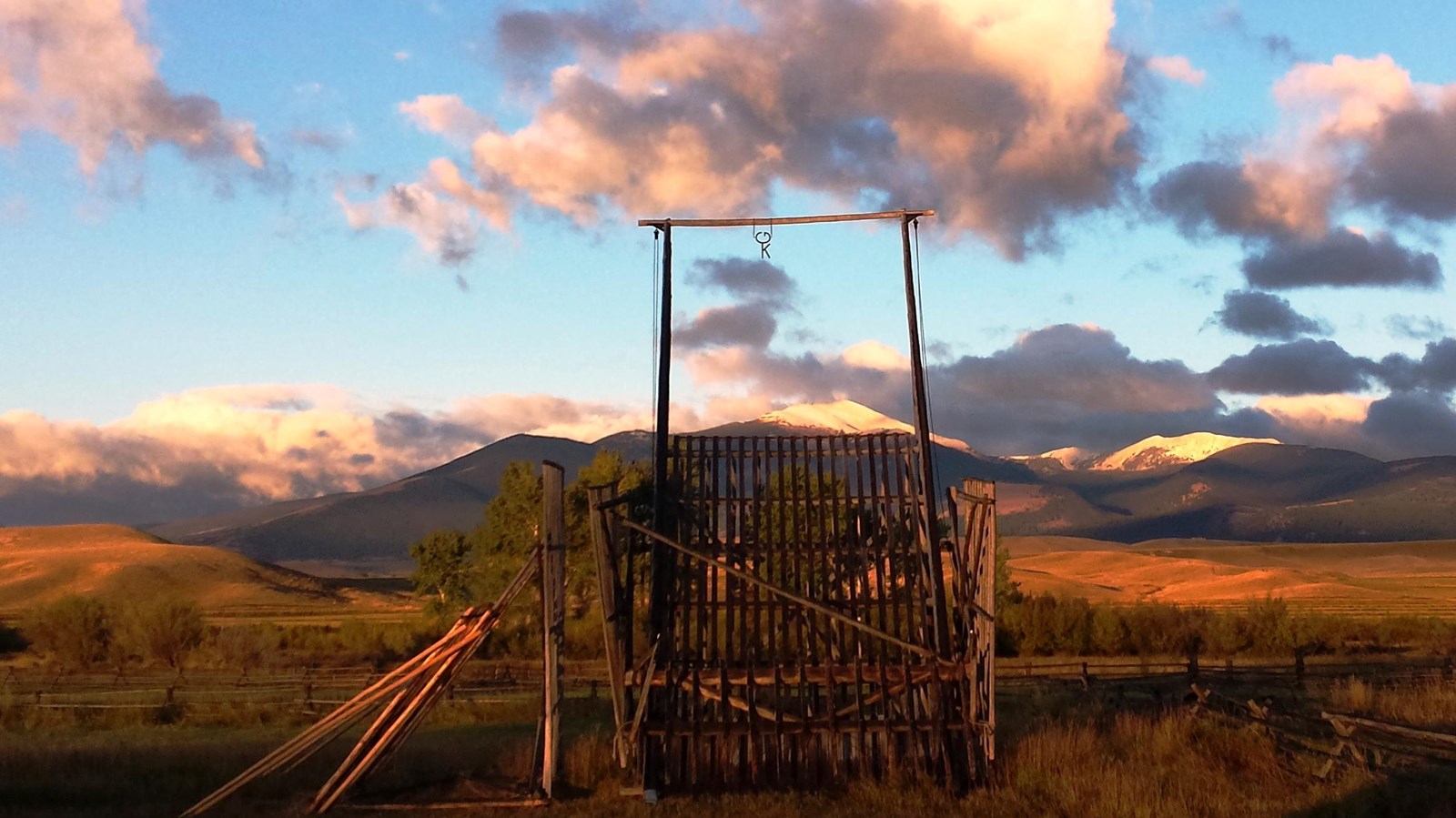Last updated: March 25, 2021
Place
Beaverslide Hay Stacker

NPS/Grant-Kohrs Ranch
Quick Facts
Location:
Deer Lodge, MT
Significance:
Historical Structure
Designation:
National Historic Site
Amenities
2 listed
Cellular Signal, Scenic View/Photo Spot
The hard winter of 1886-1887 resulted in the losses of up to 90% of cattle in some herds across the northern plains. After these devastating losses it became a necessity for ranchers to grow and set aside enough hay to feed their livestock. Conrad Kohrs and other successful Montana ranchers could afford to purchase plenty of land and control reliable sources of water but finding a way to store several tons of hay would be the final hurdle.
In parts of the nation that receive ample precipitation and have high humidity levels hay needs to be cut, put onto a wagon, and then stored indoors to keep mold and mildew from ruining the year’s crop. This method can be costly and potentially dangerous. If the hay is too damp when stored, the heat generated by the decomposition can spontaneously combust, burn down the storage barn and endanger other buildings, livestock, and livelihoods. However, in the arid west, ranchers learned that the outside storage of large quantities of hay was possible. The drier climate along with the weight of the haystack pressing down onto itself, coupled with the outer crust of dry hay, would easily shed the moisture from rain and snow.
In 1908, the “beaverslide hay stacker” was invented in the Big Hole Valley of Southwestern Montana. This structure consists of a 30-foot wooden frame that supports an inclined plane. Loads of hay are pulled to a height of around 20 feet before dropping through a large gap at the top. With a portable piece of equipment like the beaverslide, hay could be piled in the same fields where it was cut. Because the stacker was made with little more than wooden timbers and metal joiners, it could be easily, quickly, and cost-effectively repaired or replaced.
There are two main methods of storing hay on the ranch today: bailing and stacking. Most of the ranch’s hay is bailed, but when used for historic demonstrations the Grant-Kohrs Ranch beaverslide can create a 20 to 25-ton stack of hay. The large stack is then left in the field and is used to feed the cattle raised on the ranch throughout the long Montana winters.
The beaverslide is named for Beaverhead County and they remain in use on many Montana ranches today.
In parts of the nation that receive ample precipitation and have high humidity levels hay needs to be cut, put onto a wagon, and then stored indoors to keep mold and mildew from ruining the year’s crop. This method can be costly and potentially dangerous. If the hay is too damp when stored, the heat generated by the decomposition can spontaneously combust, burn down the storage barn and endanger other buildings, livestock, and livelihoods. However, in the arid west, ranchers learned that the outside storage of large quantities of hay was possible. The drier climate along with the weight of the haystack pressing down onto itself, coupled with the outer crust of dry hay, would easily shed the moisture from rain and snow.
In 1908, the “beaverslide hay stacker” was invented in the Big Hole Valley of Southwestern Montana. This structure consists of a 30-foot wooden frame that supports an inclined plane. Loads of hay are pulled to a height of around 20 feet before dropping through a large gap at the top. With a portable piece of equipment like the beaverslide, hay could be piled in the same fields where it was cut. Because the stacker was made with little more than wooden timbers and metal joiners, it could be easily, quickly, and cost-effectively repaired or replaced.
There are two main methods of storing hay on the ranch today: bailing and stacking. Most of the ranch’s hay is bailed, but when used for historic demonstrations the Grant-Kohrs Ranch beaverslide can create a 20 to 25-ton stack of hay. The large stack is then left in the field and is used to feed the cattle raised on the ranch throughout the long Montana winters.
The beaverslide is named for Beaverhead County and they remain in use on many Montana ranches today.
